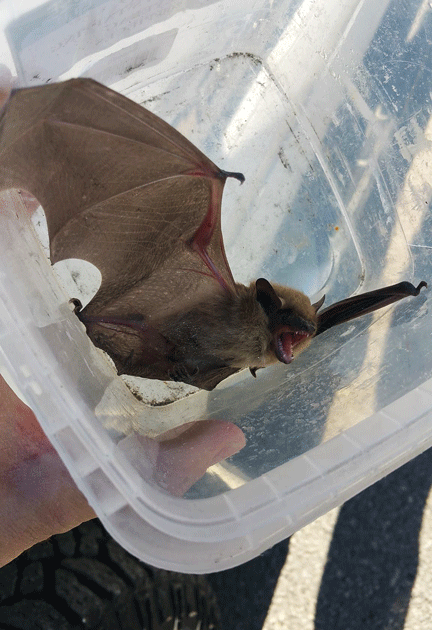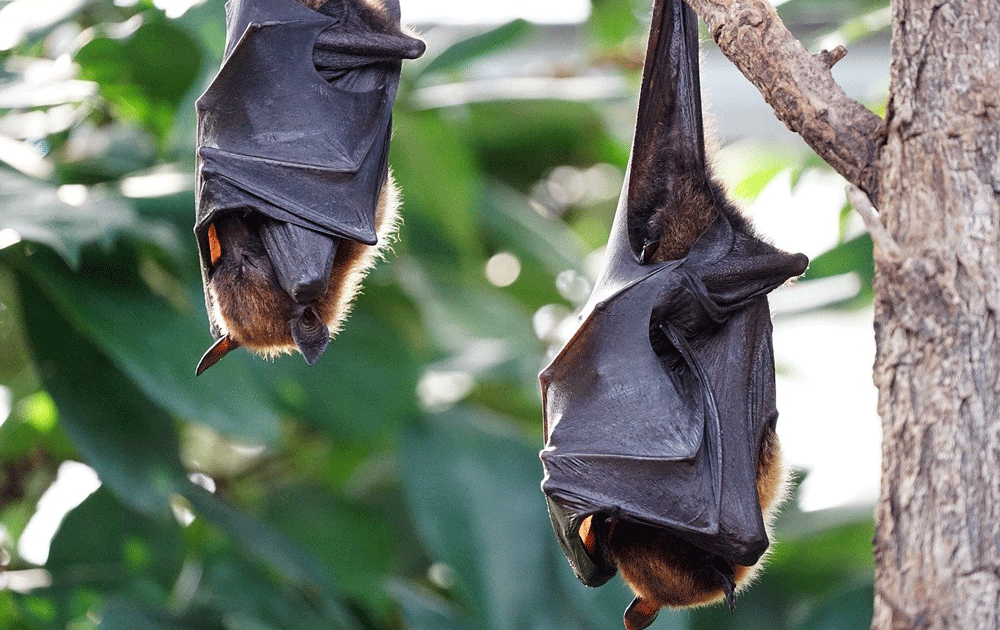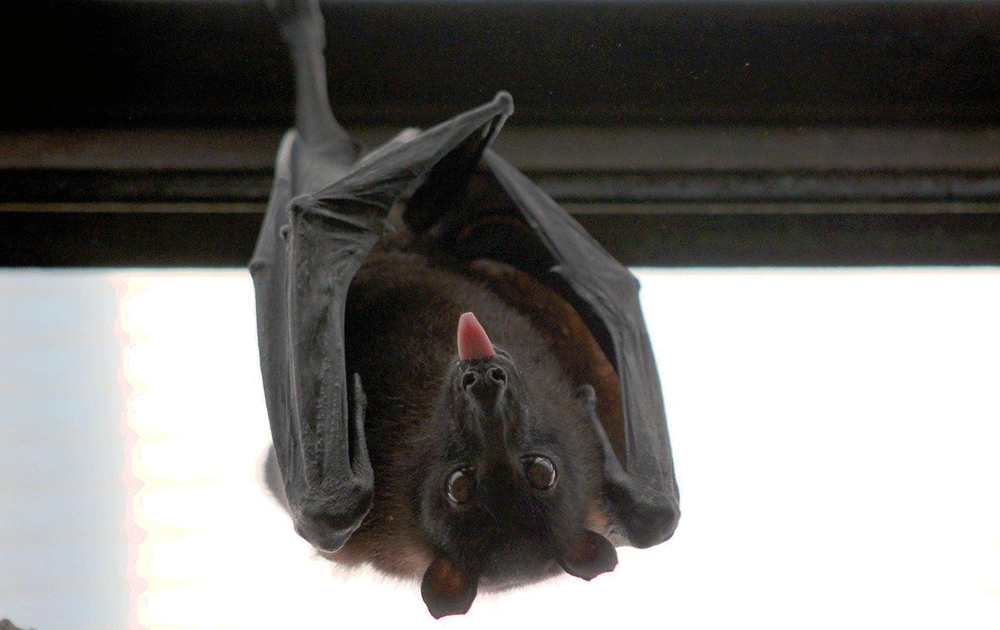
All You Need to Know About Bats
For years now, people have known bats as spooky and sinister thanks to their razor-sharp fangs and their beady eyes. However, there’s a lot more you need to know about bats other than their menacing looks. These little creatures have tales that could change the way you think of them.
Bats were first discovered on earth about fifty million years ago. And today, there are over forty-seven different species in the US alone. All these years, bats have been subject to various tests, and without a doubt, these little marvels have inspired several medical discoveries. However, most people do not understand a lot about bats. Thankfully, this article is in your best interest. Here, we are going to discuss all you need to know about bats.
Bat Solutions
Bat Description
The name bat actually can be interpreted in the Greek language to mean, ‘Hand wing.’ These animals were given the bat name because they have four very long fingers and a thumb, which are all connected by a thin layer of skin. More importantly, these animals are the only mammals in the world that can fly.
Bats are really good at flying. That’s because these creatures have moveable joints and a flexible membrane that allows them to change the direction quite fast. Bats can even catch mosquitoes in midair as they both fly.
Generally, all bats have the same physical appearance, especially when they are in flight. But their size can considerably differ. The most abundant species of bats is the hairless bat that weighs around nine ounces. On the other hand, the smallest is the bumblebee bat from Thailand. This bat weighs about 0.07 ounces.
Typically, bats can vary in terms of texture and color. More importantly, ears and muzzle appearance will differ from one family to the next one, but it’s often similar between the genera. The most outstanding feature about bats is the fact that they have a nose leaves that are found around the nostril.
As much as there’s very little research done on these physical features, most scientists believe that all these features help during echolocation calls.
There are several species of bats found in the US. They include:
- Little Brown Bat
- Big Brown Bat
- Indiana Bat
- Gray Bat
- Hoary Bat
- Hairy-tailed bat
- Big-eared bat
- Evening Bat among others
The fact that bats are flying mammals, it’s hard for them to leave tracks that you can easily follow. In fact, the best way to discover bats is by the buildup of guano, bat droppings. If you have bat droppings near your home or in a hole, then that’s a clear indication that bats typically are around your area.
Bat droppings, also identified as guano, are the accumulation of excrement of bats or in other cases, seabirds. Guano can be used as manure since it’s an effective fertilizer due to its high potassium, nitrogen, and phosphate content. These are key nutrients when it comes to the growth of plants.
Bats tend to be nocturnal. That’s because nearly all species will roost in the day then go to forage at night. That puts the vampire bats, and the fishing bats at an advantage over the sleeping prey. What’s more, darkness protects bats from their visual predators, high levels of ambient temperature, sunlight exposure, and low humidity.
The large skin surface in bats means that they are likely to absorb rather than radiate the heat if they are to be active during the day. That means that they will also lose body water, which is required for general temperature regulation.
Therefore, that will force bats to only forage near water bodies or find the best way to maintain water in their bodies as they fly. Sounds hard, right? Well, the most natural solution for such a dilemma is to operate only at night.
In addition to that, their nocturnal activity is probably the reason why these bats survived for so long without extinction. Generally, bats wake up and leave the caves just before nightfall. And if in case these creatures wake up earlier than expected, their biological clock will reset.
Flight is actually the most crucial part of bats. However, their way of movement varies from one specie to the other. Some of the species, for instance, the free-tailed bats, are adapted to flying in high altitudes and open spaces.
That’s because they have long and narrow wings that can move swiftly. What’s more, these bats have a large turning radius. Other species, for instance, the false vampire bats, are adapted to hovering over gardens and will feed on flowers.
Such types of bats typically have short and broad wings, which means they have a slow flight. Vampire bats will just leap in the air and spread their wings to fly. On the other hand, the free-tailed will roost slightly above the ground because when they start to fly, they typically fall first before becoming airborne.
Generally, most bats feed on insects. And yes, even the vampire bats! The prey species have been identified in the stomach of these bats, but such research has not provided the full range of the prey. All in all, bats use echolocation to find prey in the dark.
Giant insects are identified and intercepted by the wings of the bat then pulled to the mouth. Some bats, however, feed on arthropods, spiders, giant insects, and also scorpions. Bats will either land on the prey, then kill it or pick it up with their teeth and fly with the prey.
Although the social life of bats has not been fully observed, there are a few notable facts you should know about them. For instance, pregnant bats are taken to a different nursery to roost.
That happens until their young can be independent. In some cases, social segregation has been identified in some of the species, especially during foraging.
- Bats have adapted to almost every environment in the world. These creatures are natives in America, Asia, Australia, and even Africa.
- Bats can actually survive being encased in ice during their hibernation.
- What’s more, bats help in controlling the population of insects and pests through feeding on them.
- Most bats are immune to many diseases, which has led to the discovery of several medical facts by studying them.
In Summary
Well, there you have it! As you can see, there’s a lot to know about bats other than their vampire features. In fact, through studying bats, we are likely to have a deeper understanding of mammals and their evolution. Who knows! Maybe someday these little creatures will finally help us answer the question, ‘where did we come from?’
 There are multiple kinds of infestations that can occur in a typical household. Squirrels, insects, and even mice and rats are pretty common and well known about. But these are not the only kinds of animals that can try to set up a nest inside your home so you must always be aware of some of the more uncommon types of creatures that might be roaming around your attic. One of these kinds of unwanted visitors is bats.
There are multiple kinds of infestations that can occur in a typical household. Squirrels, insects, and even mice and rats are pretty common and well known about. But these are not the only kinds of animals that can try to set up a nest inside your home so you must always be aware of some of the more uncommon types of creatures that might be roaming around your attic. One of these kinds of unwanted visitors is bats.
Despite being more associated with caves than anything else, bats have also been known to get inside people’s houses and use them as a resting area from time to time. This can be very dangerous as bats are known to be carriers of certain diseases such as rabies, and their droppings are not only toxic to humans, but to your garden and home as well.
Some of the more obvious signs of a potential bat infestation inside your house can include but are not limited to:
Bat sightings:
Despite being a bit obvious of a sign, the fact is that there are many types of animals that tend to roam into human abodes. In order to be certain that your unwanted visitors are indeed bats and not another, more common animal, you must have some sort of visual confirmation of their presence. They are not particularly hard to spot though and are very likely to give you a fright. It is best to keep a distance at all times to prevent injury or sickness.
Bat droppings:
Bat droppings, referred to as “guano”, are a very dangerous type of animal feces that can carry disease and even some types of fungus called Histoplasmosis that can contaminate and ruin your lawn and garden. Bat droppings are relatively easy to identify. They are thin little pellets of a dark black color, almost resembling some form of insect or small worm. The bats tend to roost in ceilings and high places, meaning that their droppings all pile down on one specific place under the nest instead of spread across an area. If you see a big black pile of bad-smelling, insect looking pellets, then it is very likely to be bat droppings.
Squeaking noises:
Bats have a very telltale noise that they make that is pretty well known in popular culture. They tend to make squawking noises that sounds like a cross between a bird’s call and rodent squeaks. Due to their nocturnal behavior, they tend to make these sounds mostly during the night as the female bats interact with their children.
Other nocturnal activity:
As with the noises, bats are primarily active during the night. This means that you should be able to recognize a bat infestation over other types of animals if most of the activity and ruckus occurs after hours. This can include flying in and out, making continuous clicking noises, as well as any hunting or foraging activity that might be going on outside in your yard and local neighborhood areas.
 A bat infestation can be an extremely troublesome issue to deal with as they are a very unusual type of animal to have in your house; as well as the complexity of the situation that their presence often entails. They are loud, fast, yet evasive and good at hiding. They can cause house damage as well as promoting an extremely toxic and hazardous living environment. If not taken care of quickly and properly, bats can be one of the more problematic animals out there to have living in your house. Not to mention that it can be a bit harder to find specialists dealing with this sort of animal for removal and relocation.
A bat infestation can be an extremely troublesome issue to deal with as they are a very unusual type of animal to have in your house; as well as the complexity of the situation that their presence often entails. They are loud, fast, yet evasive and good at hiding. They can cause house damage as well as promoting an extremely toxic and hazardous living environment. If not taken care of quickly and properly, bats can be one of the more problematic animals out there to have living in your house. Not to mention that it can be a bit harder to find specialists dealing with this sort of animal for removal and relocation.
Below are some of the main dangers and damages they can cause. As with all animals, you must be careful not to come into close contact with them or their nests and droppings. You must also contact a local specialist for removal before things get out of hand. Costs for fixing bat damage can be very high as their stealthy nature means they might be operating undetected for a lot longer than you’ve been aware of them. The main dangers associated with a bat infestation are as follows:
Contact with bats: Bats are dangerous animals to be around as they can be carriers to a host of hazardous and potentially life-threatening diseases and bacteria such as rabies. Under no circumstances should you ever go near or attempt to touch one yourself as this can provoke an attack. Bats are simply animals that will react in an unpredictable way if disturbed carelessly so it’s best to leave them alone while you get in contact with a professional.
Feces: As unpleasant as this may be, bat feces (referred to as “guano”) are an extremely harmful substance that can cause problems in a large variety of ways. The obvious danger is their toxicity. As with any type of animal droppings, bat guano must be avoided at all costs as it can be very harmful to humans. It can cause serious health problems, along with any medical costs this may later incur. Bat guano is also a problem because bats are almost certain to set up a nest of many members in your roof. The droppings can accumulate surprisingly quickly and can easily create piles so large that they can even cause damage to your ceiling or worse, collapse it. The odor as one can imagine would be extremely repugnant and would require a lot of time and money to clean up. Not to mention that inhaling it can also cause its own health problems.
General damage:
Along with the aforementioned ceiling damage that bats can cause, they can also end up scratching or moving around your property. As they fly around they could easily knock over furniture and decorations that may be expensive or hard to replace.
Nesting:
Dealing with bat nests requires the assistance of a specialist as attempting self-removal can be harmful to both you and the animal’s small offspring.
